This Mansard Roofed Romanesque Revival Pile Was a Bastion of Higher Education in Bed Stuy
The first wing of the massive building opened in 1870 as St. John’s College, a Catholic school.

Photo by Susan De Vries
Editor’s note: This story is an update of one that ran in 2011. Read the original here.
By the 1870s, the Catholic Church was coming into its own as Brooklyn’s fastest growing denomination. The middle part of the 19th century saw a huge influx of Catholic Irish and German immigrants, who necessitated the building of churches and schools in record numbers.
Although the spiritual needs of their burgeoning congregations were of the highest importance, the church also was very interested in all levels of education. Most of Brooklyn’s larger Catholic churches had elementary and often high schools attached to them. For higher education, many Catholic young men were going to Fordham University in the Bronx. But that school was quite a commute for a young man in Brooklyn, so by the 1870s, the Diocese of Brooklyn established its own college, called St. John’s College.
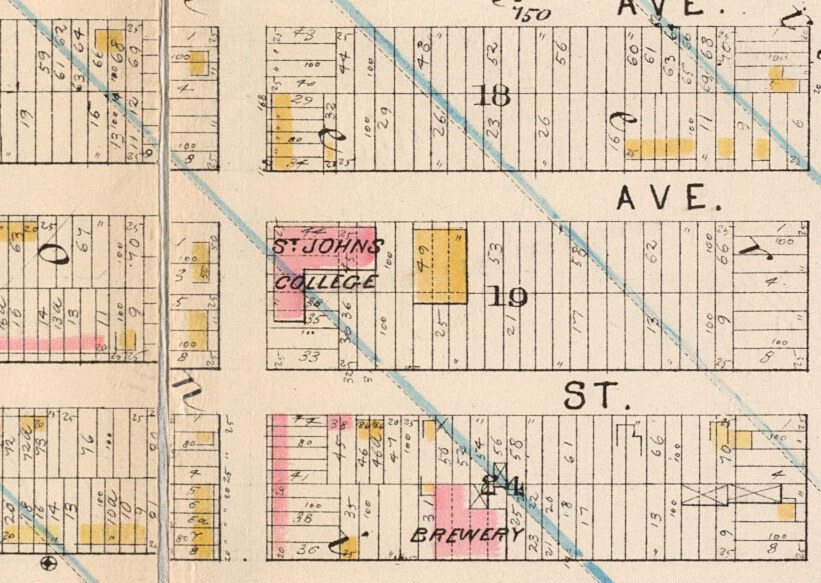
The cornerstone for St. John’s College at 71-73 Lewis Avenue was laid in 1869 by the head of Brooklyn’s clergy and its first bishop, Bishop John Laughlin. The new college began as an enormous squarish building with a central courtyard.
It was designed by Patrick Keely, the preeminent architect for the Catholic Church in the late 1800s, whose churches and related buildings stretched from Nova Scotia to the Gulf of Mexico. Over the course of his lifetime, Keely designed nearly 600 churches and hundreds of schools and other buildings, mostly for the Catholic Church, with a few Protestant churches tossed in as well.
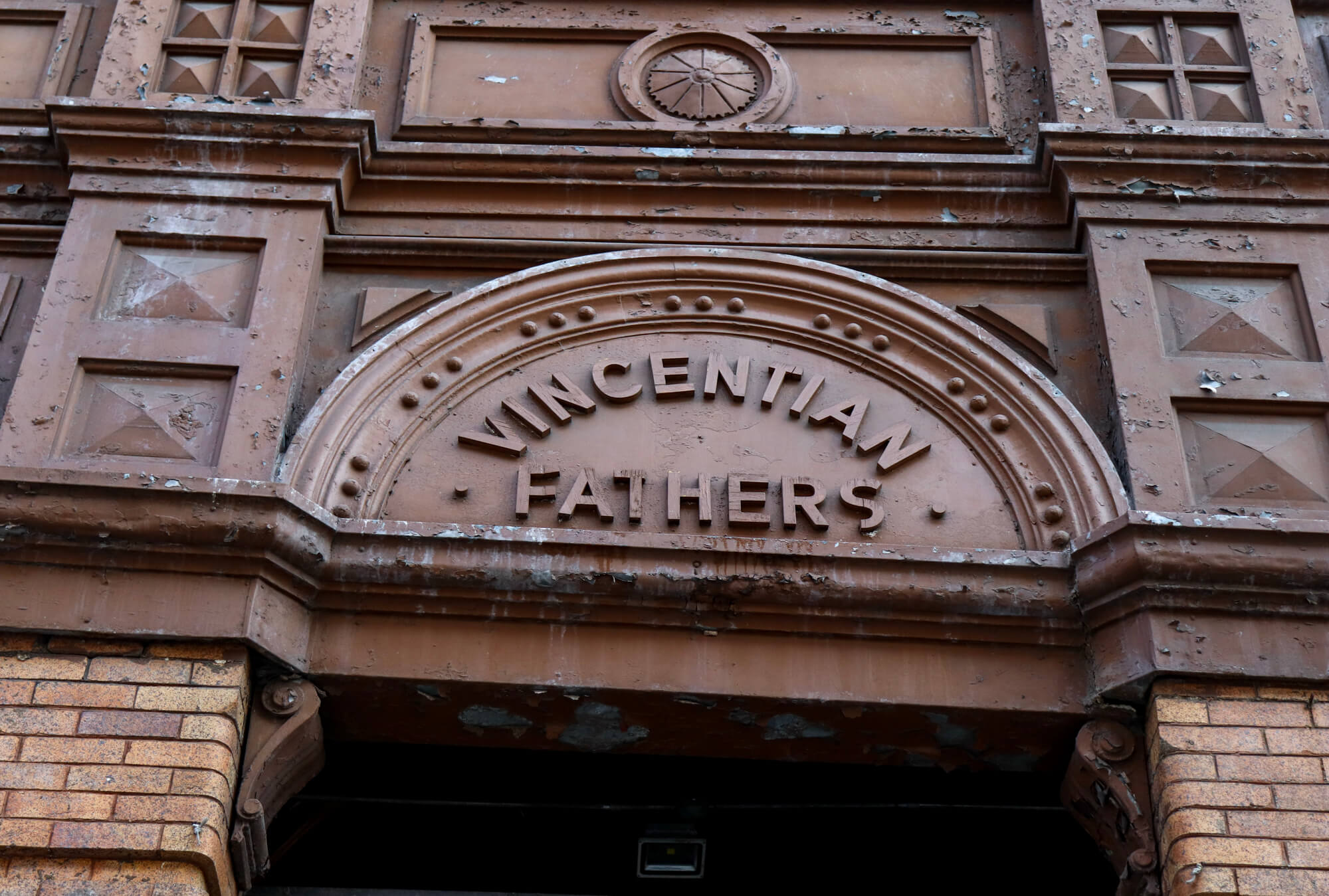
Keely was an Irish-born immigrant who made his home here in Brooklyn, and later in Providence, R.I. He had no formal architectural training, but was taught the building trade by his father, who was a draftsman and builder. Upon arriving in America, Keely worked as a carpenter and builder, until his work on Saints Peter and Paul Church in Williamsburg got the attention of the diocese, and he never looked back. He also worked on the St. John the Baptist Church next door to this school.
For the new St. John’s College, Keely designed a massive four-story-and-basement Victorian pile, a Romanesque Revival brick building with intricate brickwork, a multicolored slate mansard roof, turrets and towers, dormers, bays, bows and a domed cupola. There are plenty of windows for natural light, and a central courtyard that is enclosed by the wings of the building. It’s very impressive.
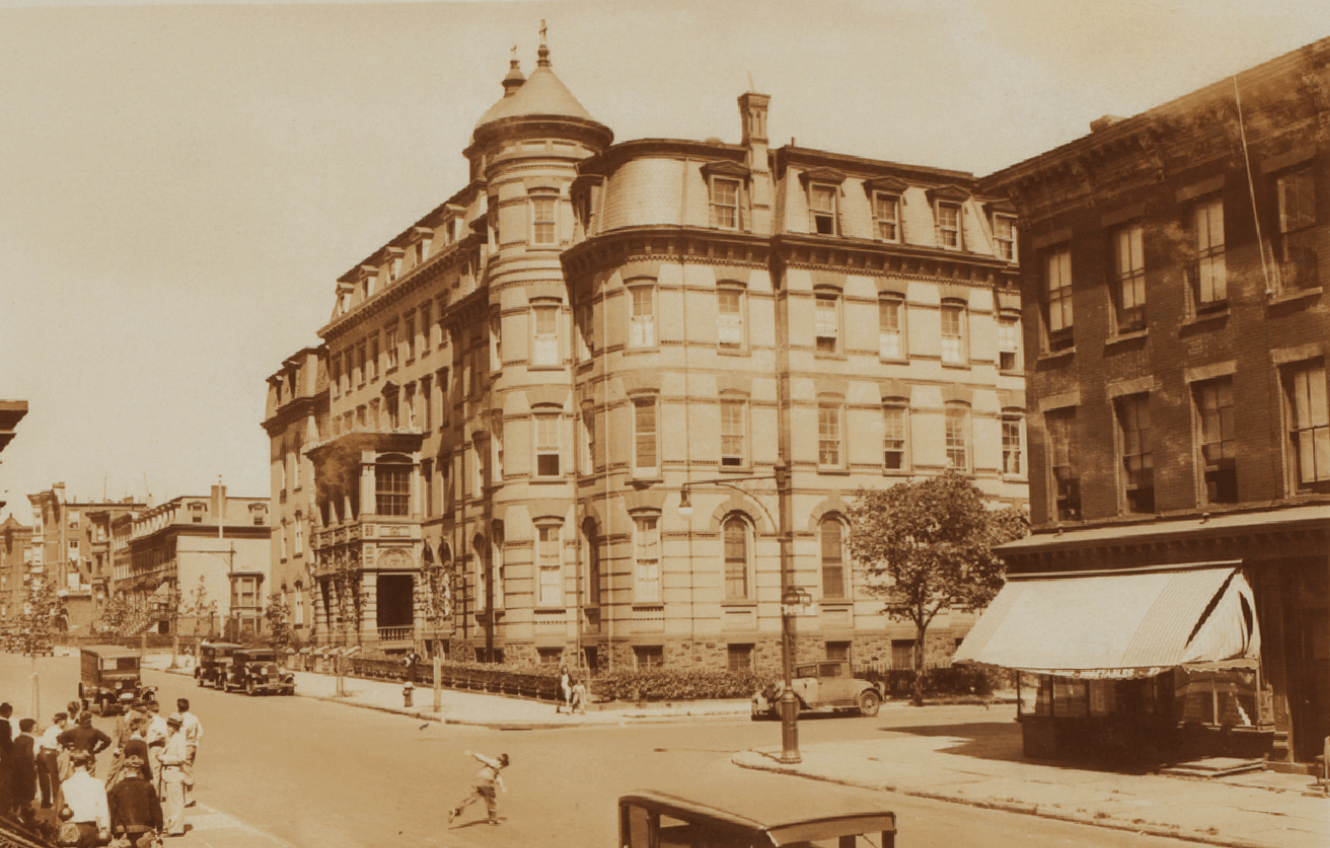
The first wing of the school opened in 1870, with the rest of the building completed by 1872. The building faces Lewis Avenue as well as Willoughby and Hart, which was called Yates Avenue back then. The school eventually expanded to two new buildings across Lewis Avenue. With the addition of a law school located in Downtown Brooklyn, St. John’s became a university. It stayed in Bedford Stuyvesant until the 1950s, when it relocated to Queens.
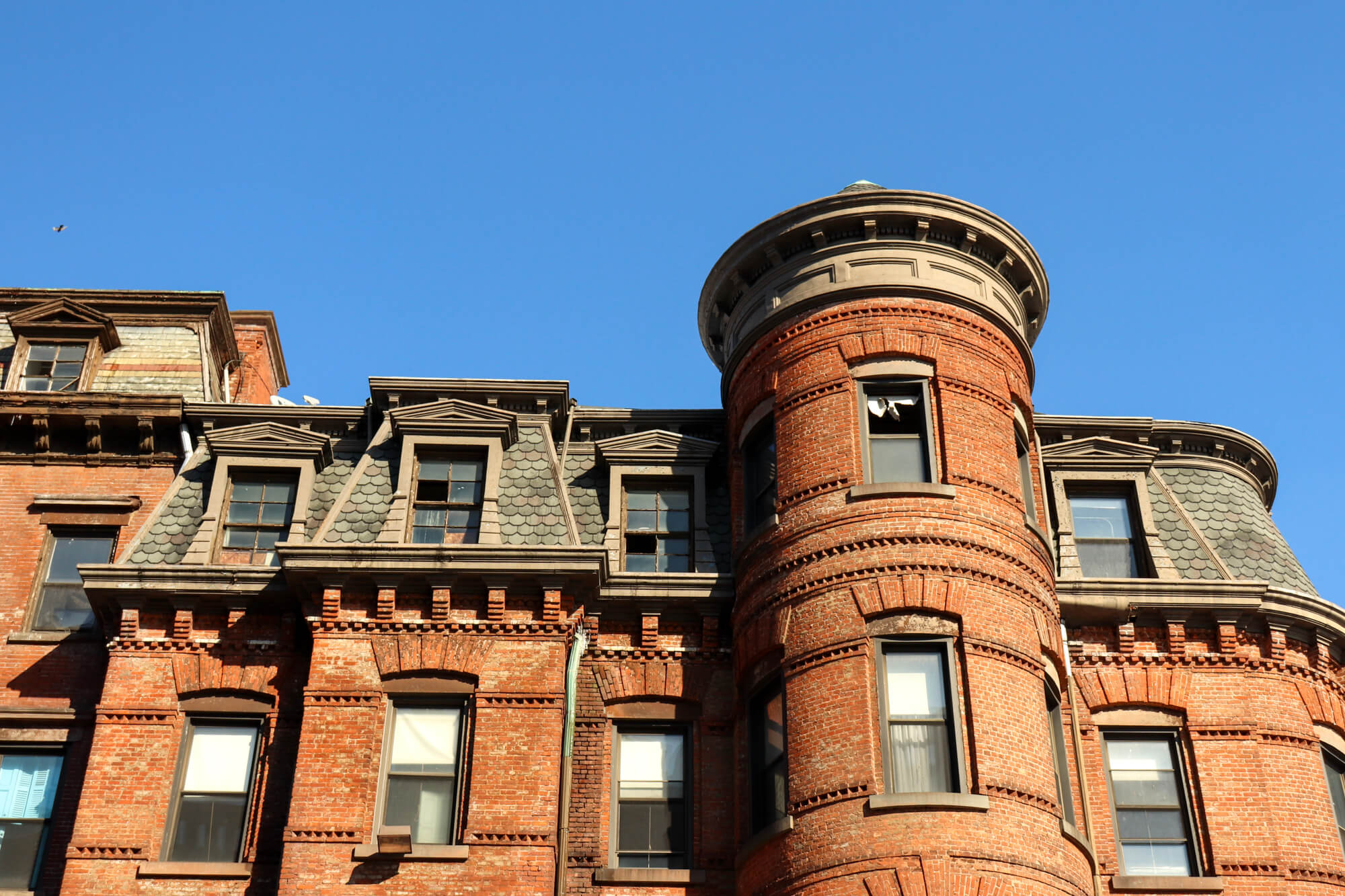
The massive building has housed a number of Catholic schools and community service institutions ever since. During the mid-1980s, part of it became the New Bedford Stuyvesant Catholic Junior High School, where my mother was teaching when she died in 1985. The school has since disbanded.
More recently the building was home to the New Horizons Adult Education Center as well as several other parish-based and community institutions. The Roman Catholic Church still owns the property. In 2015 DNAinfo reported on plans to convert the building to residential rentals but so far the plan hasn’t moved forward. [Editor’s note: The apartments are set to open in the fall of 2024. With an address of 788 Willoughby Avenue, the building is now known as The Hartby.]
This building, as well as St. John the Baptist Church, needs to be landmarked. They are important in the history of Brooklyn, as well as fine examples of Patrick Keely’s work.
[Photos by Susan De Vries unless noted otherwise]
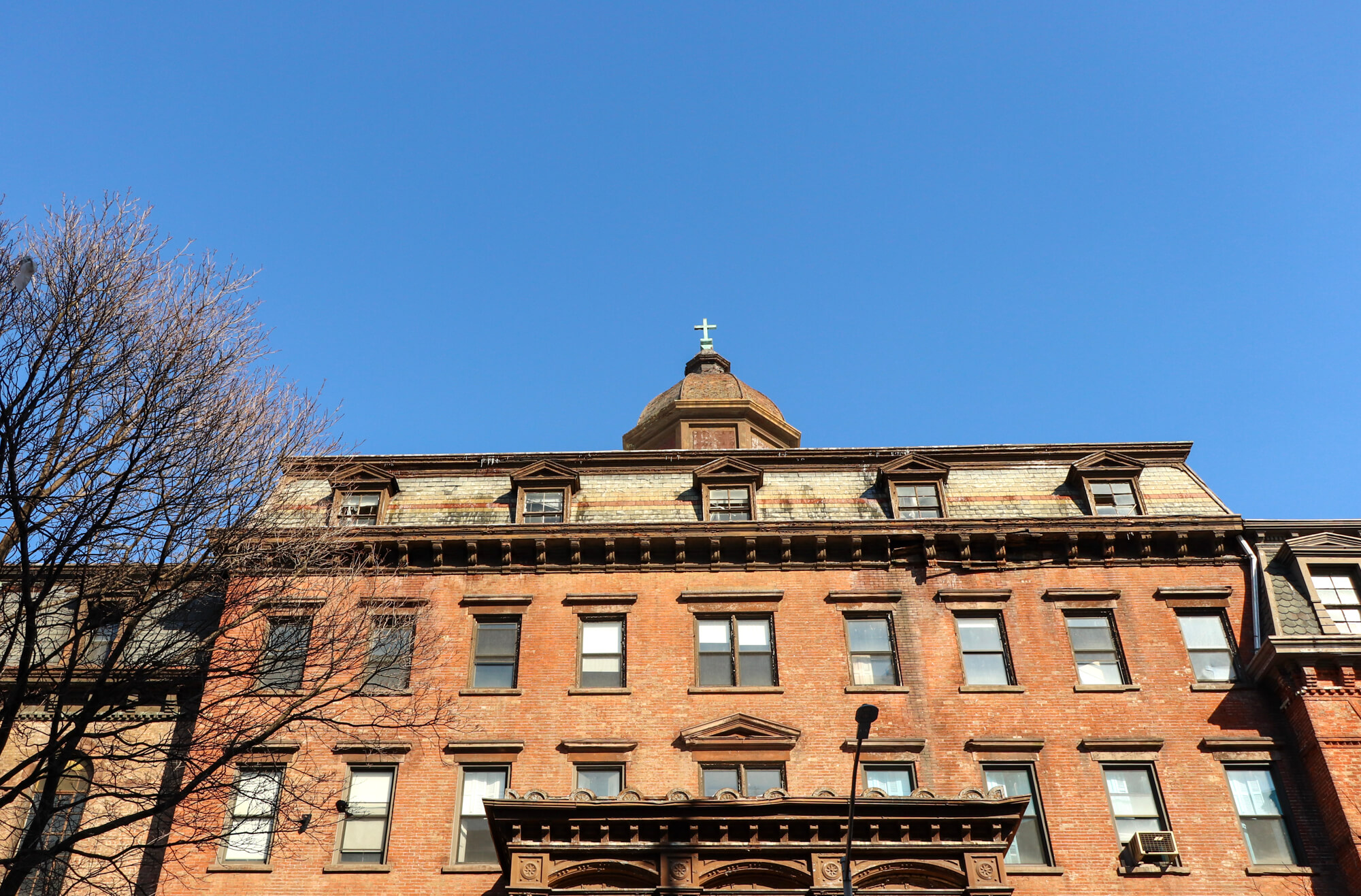
Related Stories
- A Colorful Pre Civil War Manse Takes a Musical Turn in Park Slope
- Saving St. John the Baptist Church
- Charity Starts at Home
Email tips@brownstoner.com with further comments, questions or tips. Follow Brownstoner on Twitter and Instagram, and like us on Facebook.





What's Your Take? Leave a Comment